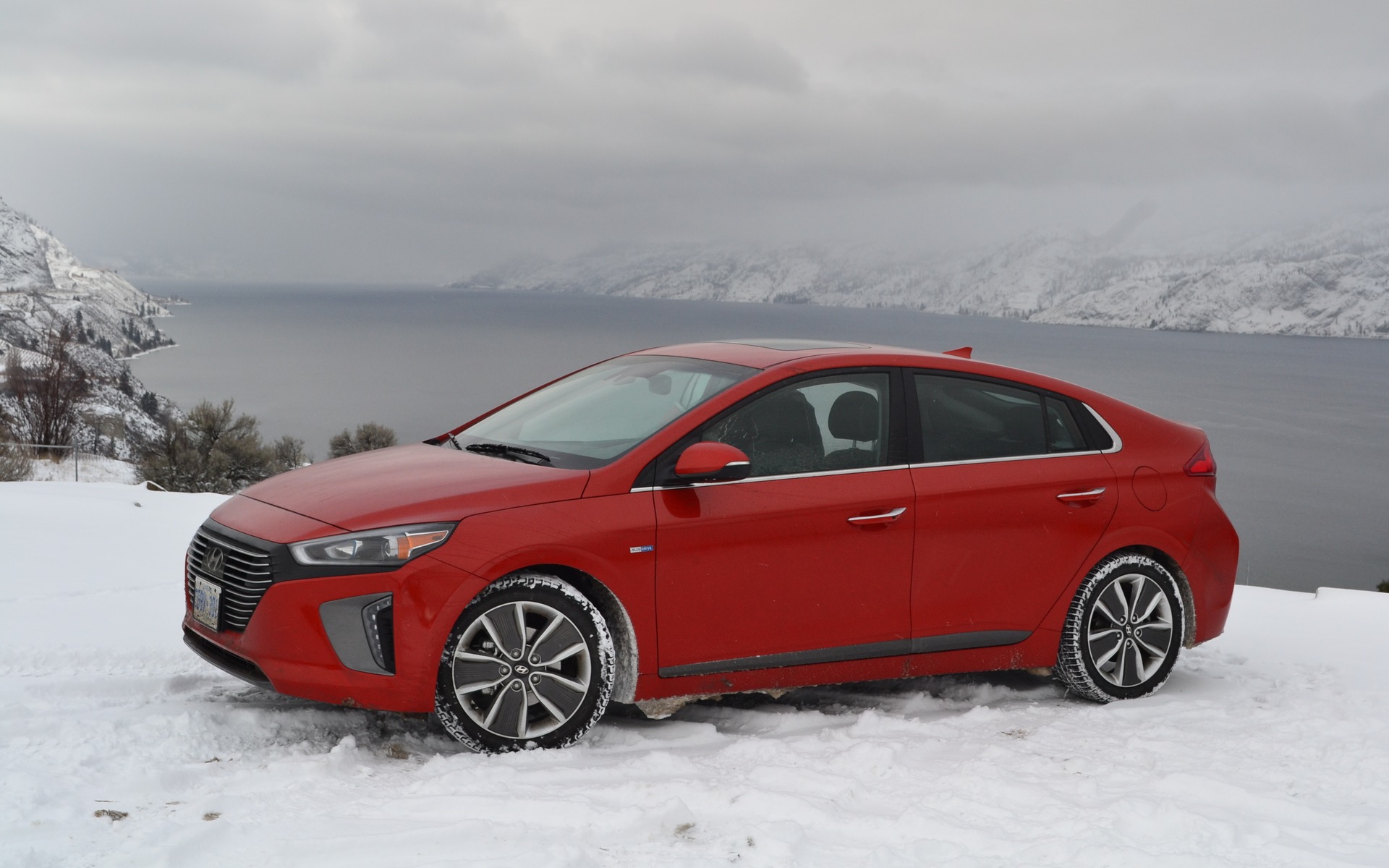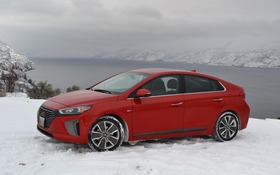2017 Hyundai Ioniq: the Green Solution of the Future?

| Strong points |
|
|---|---|
| Weak points |
|
During the media launch of the 2017 Hyundai Ioniq, Hyundai Canada’s President and CEO, Don Romano, mentioned that in the medium term, no single technology will replace the internal combustion engine. Just like many of the other speakers, he believes that a range of choices will be available and that buyers will be able to opt for the powertrain that suits them best.
The new 2017 Hyundai Ioniq, which is slated to arrive a little later this year, will offer a choice of three drivetrains including hybrid, fully electric and plug-in hybrid. It reflects this philosophy perfectly.
- Also: 2017 Hyundai Ioniq: Electric, Hybrid and Plug-in Hybrid
- Also: 2017 Hyundai IONIQ trio makes North American debut
Its proportions are similar to those of the Hyundai Elantra, but the 2017 Ioniq is built on an entirely new platform designed to optimize its unique features. In other words, they didn't just tweak an existing platform. It's a little longer than the Nissan LEAF, but not as long as the Toyota Prius and Chevrolet Volt. However, it's the champ when it comes to wheelbase, width and interior space, which enhances its practicality.
Nothing’s definitive yet price-wise, but the basic hybrid version should go for about $24,000 while the electric Hyundai Ioniq should start at $35,000, which is less than several of its rivals.

Modern but not excessively outgoing
The Ioniq’s style is modern and very attractive. Although the designers made drag coefficient their priority, they also made sure that the model would stand out without falling victim to the temptation of excess. Its hexagonal front grille establishes its kinship with the brand while the liftgate’s two glass sections are reminiscent the Chevrolet Volt. A keen eye will be able to identify the electric versions from their taillights and distinctive rims, but what makes it truly unique is the absence of a front grille. Instead, there’s a full panel. All versions of the Ioniq share the same colour palette, meaning there are no unique colour schemes for the electric variant.
Despite these few particularities, the passenger cabin remains true to the brand’s recent vehicles, especially the middle part of the dashboard. A touchscreen helps display and control most of the infotainment and comfort features, and you really get a sense of quality and attention to detail: Hyundai has made major strides in this area. In the electric version, the clutch lever has been replaced by a set of buttons that let you select forward, reverse or park. And to really hammer home the vehicle’s environmental side, the cabin is made from recycled materials.
The Hyundai hybrid
The most affordable Ioniq will be the hybrid version. Under the hood, there’s a 1.6-litre gasoline engine that develops a meager 104 horsepower and 109 lb.-ft. of torque. A 32-kW electric motor assists the gas engine and adds approximately 43 horsepower for a combined total of 139. Working with an excellent twin-clutch, six-speed automatic gearbox (a rarity in a hybrid car), this drivetrain promises a city/highway fuel consumption rate of 4.1 L/100 km. The compact 1.56-kWh battery is recharged by the gasoline engine or by regenerative braking.
The Hyundai plug-in hybrid
The plug-in Hyundai Ioniq comes with the same mechanical components, but the battery pack capacity is upgraded from 1.56 to 8.9 kWh, which gives it an electric operating range of about 40 km. Its 45-kW electric motor is also a little more powerful than the regular hybrid’s mill. The car can be charged using a 120-volt outlet or a 240-volt charging station. However, it weighs 100 kilograms more and its cargo area is reduced by 107 litres.

The electric Hyundai
Having left behind the gas engine and everything that goes along with it in favour of the drivetrain in its simplest form, the electric Ioniq will turn more than a few heads. Its obvious advantages are reduced maintenance costs and the fact that you’ll never have to pump gas again. The electric Ioniq gets strongest of the electric motors with an 88-kW output, which is equivalent to 118 horsepower and 218 lb.-ft of torque. Its battery pack is also the most robust with a capacity of 28 kWh. The 200-km operating range is less than that of a Chevrolet Bolt EV or a future Tesla Model 3, but its lower price could interest those who don’t need more range than that.
The first version we drove was the hybrid. We were near Kelowna, B.-C., and the manufacturer expected milder weather, but the unusually wintery conditions gave us the chance to assess the Ioniq’s cold-climate potential. We found out that the lack of a rear windshield wiper made visibility a lot more difficult in bad weather, with both panes getting dirty and covered in snow.
We liked the efficiency of the six-speed twin-clutch gearbox on the hybrid. It does a nice job making up for the modest power of the drive system. However, the engine proved really noisy when we were going up steeper inclines, as though the transmission had to let it roar in order to maintain sufficient power. It’s less noticeable in normal conditions. You can opt for Eco or Sport mode, which regulates the steering assistance, automatic gearbox and engine in favour of fuel economy or sportiness.
In the electric Ioniq, we liked the instant torque. In fact, it’s delivered so quickly that the electronic systems had a hard time avoiding wheelspin on slippery roads. Rather than controlling the various transmission gears, both levers located behind the steering wheel are for selecting one of three regeneration modes, with the most aggressive practically stopping the car as soon as you take your foot off the accelerator. You can almost drive it with just one foot.
The Ioniq doesn’t boast the longest operating range, but Hyundai intends to stand out with comprehensive equipment and, more importantly, a competitive price. After all, this is the same strategy for success that the Korean manufacturer has been using for years.











